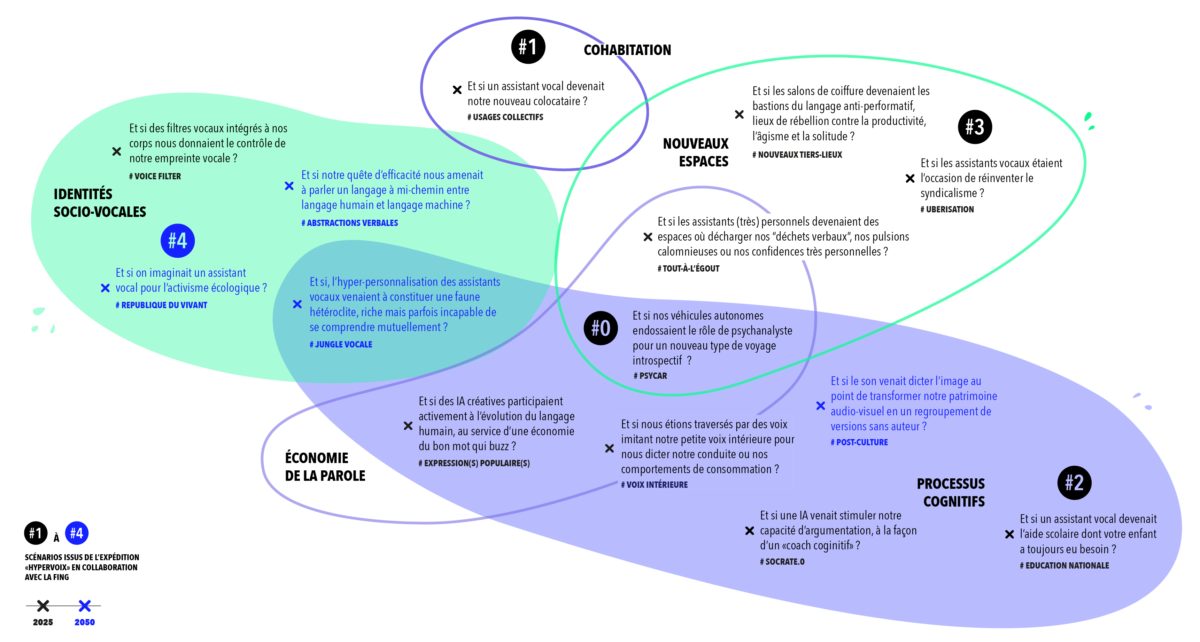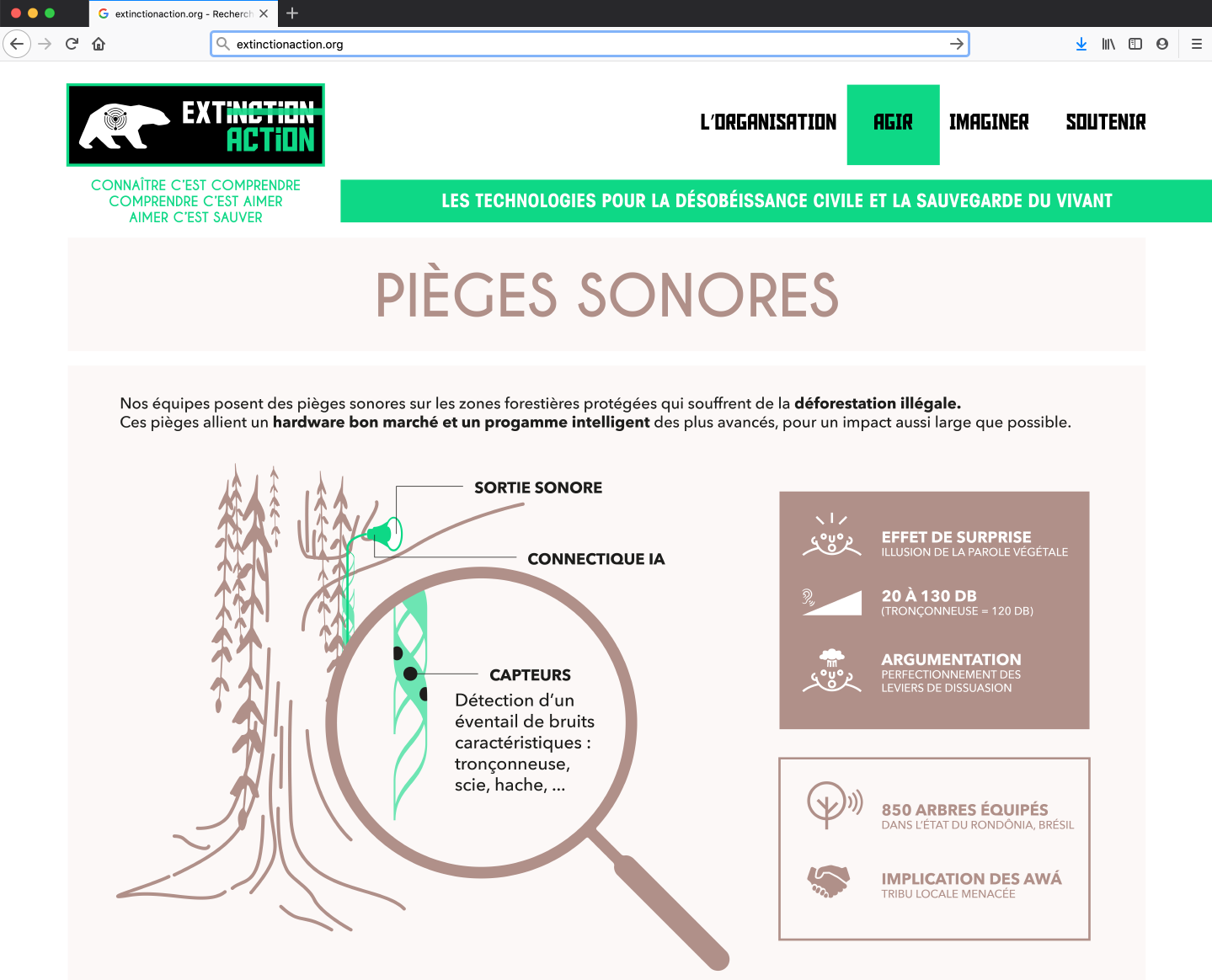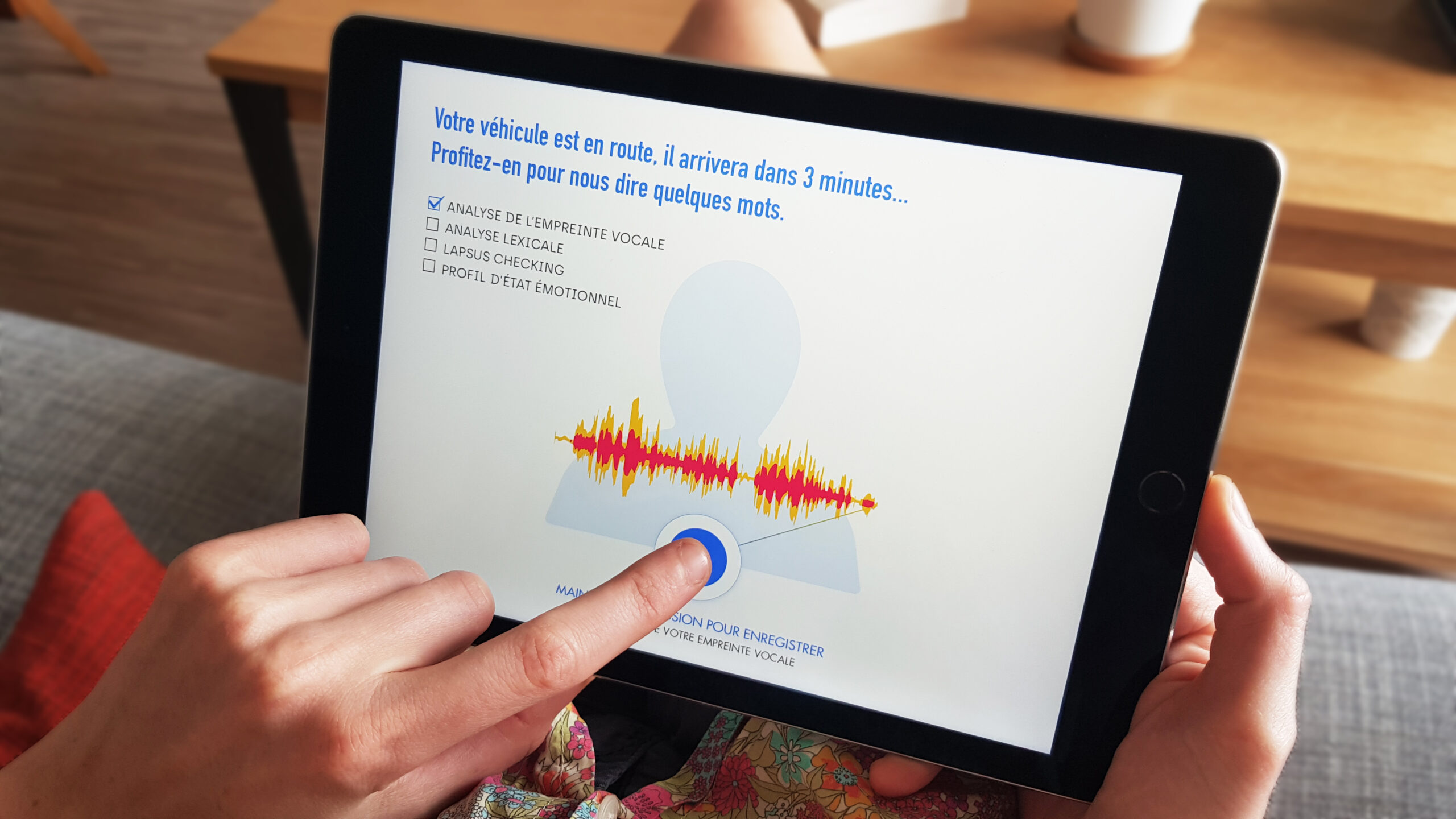
Hypervoice
Designing the future challenges and opportunities of smart voice assistants
With the growing use of voice assistants, could the hybridisation of interfaces change our interactions with digital technology? Does the multiplicity of interfaces introduce a new level of complexity in their development and uses? Are we moving towards new ways of interacting with digital technology and, by extension, towards new imaginaries?
Initiated by the Fing association, Hypervoice (Hypervoix) is an exploration of the promises, but also the illusions, carried by new human-machine interfaces, particularly voice-command interfaces. Conducted in collaboration with the University of Toulouse-Jean Jaurès, the LLA-CRÉATIS laboratory, ESA Pyrénées, and Postillon-Prospective, Hypervoix examines the new uses that could emerge and the design challenges that these devices present.
Four design fiction scenarios, both visual and auditory, were developed and then discussed in a public workshop. Participants were invited to share their perceptions of these possible futures, based on how preferable they found them.

↑ Mapping the intersections of technological and societal issues explored by Postillon-Prospective.

↑ In the Végétalk scenario, sound traps give voice to trees to help them defend themselves against illegal deforestation. This deliberate anthropomorphism is used to tap into emotional triggers and serve the cause of the activist NGO.
The conclusion of the expedition featured both the benefits and the areas of caution raised by the deployment of voice assistants. This analysis of prospective issues was accompanied by a set of recommendations for the initiative’s partners (Société Générale, Renault, La Poste, and MAIF), as well as for designers of voice interfaces. These action points covered a wide range of pressing issues, now more relevant than ever:
- The integration of these technologies in various contexts,
- The transparency of intelligent systems,
- The respect for privacy,
- The pressing needs for inclusion, representativeness, and protection of vulnerable groups.
Hypervoice is part of a broader initiative led by Postillon-Prospective, launched by our studio and designer Zoé Aegerter. Postillon-Prospective explores the tensions surrounding these ‘talking’ technologies: intrusiveness, information overload, the illusion of neutrality, lack of system interoperability, and more. This approach is participatory and open to new collaborations with public or private stakeholders interested in this subject.

↑ The PsyCar scenario envisions a future where autonomous vehicles take on the role of psychologists, offering an inner journey during an urban commute.
